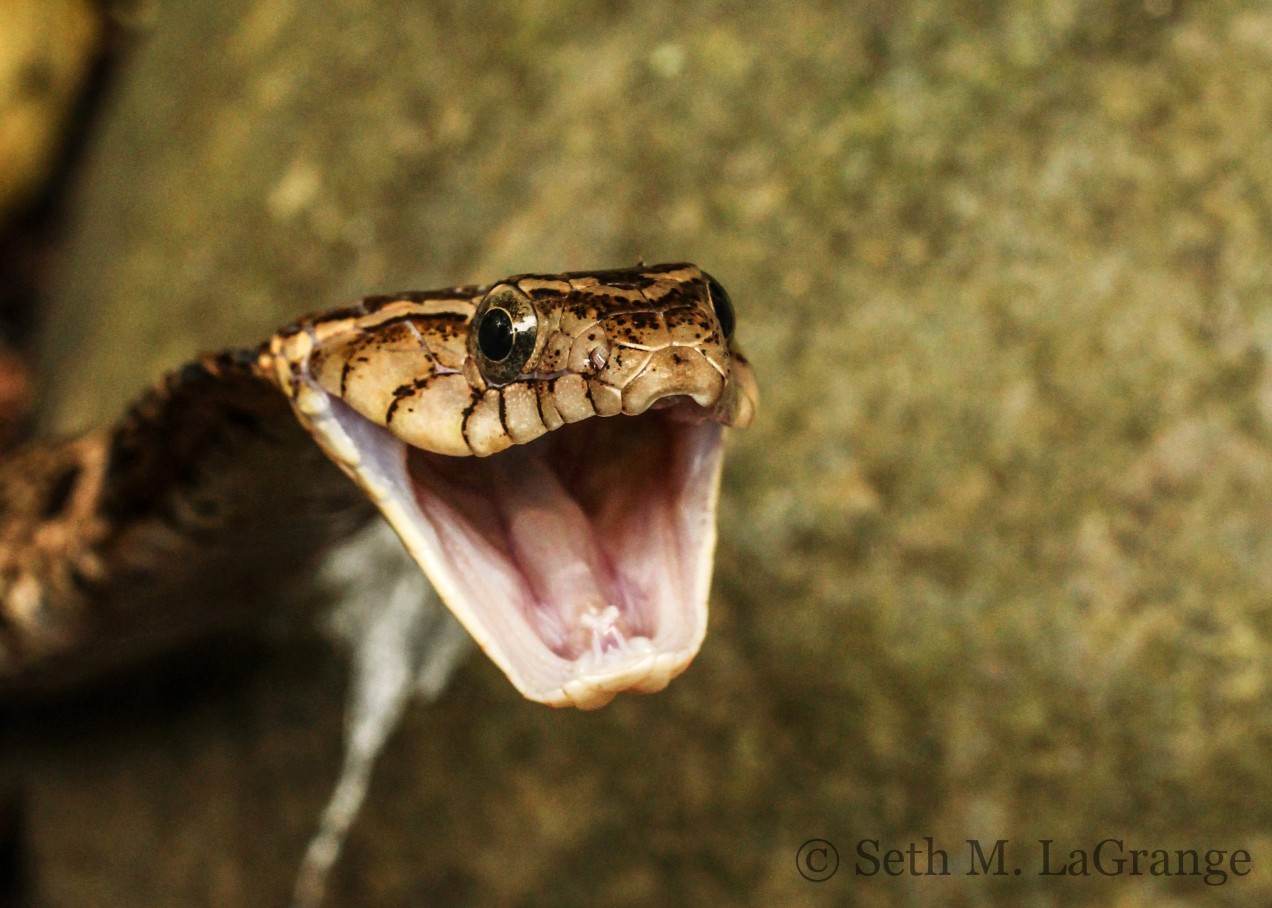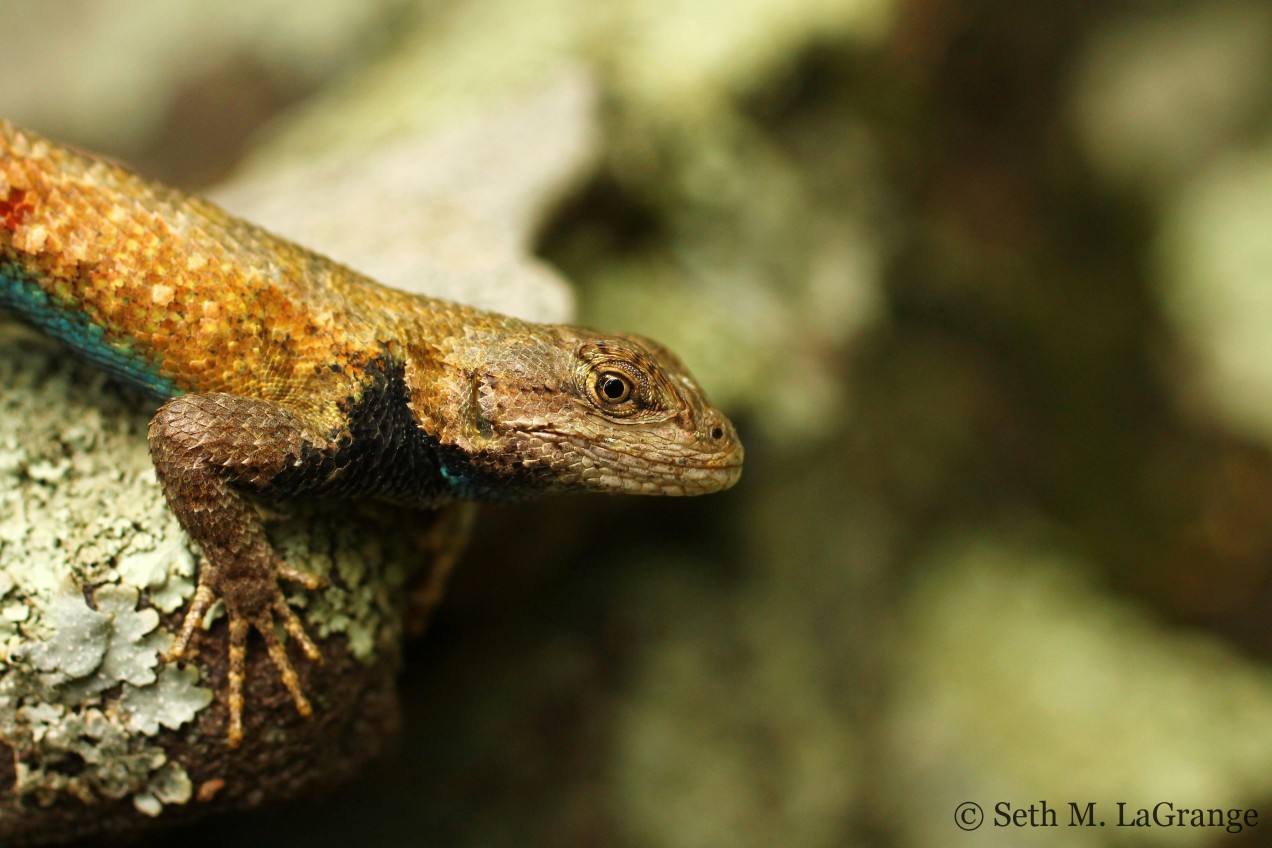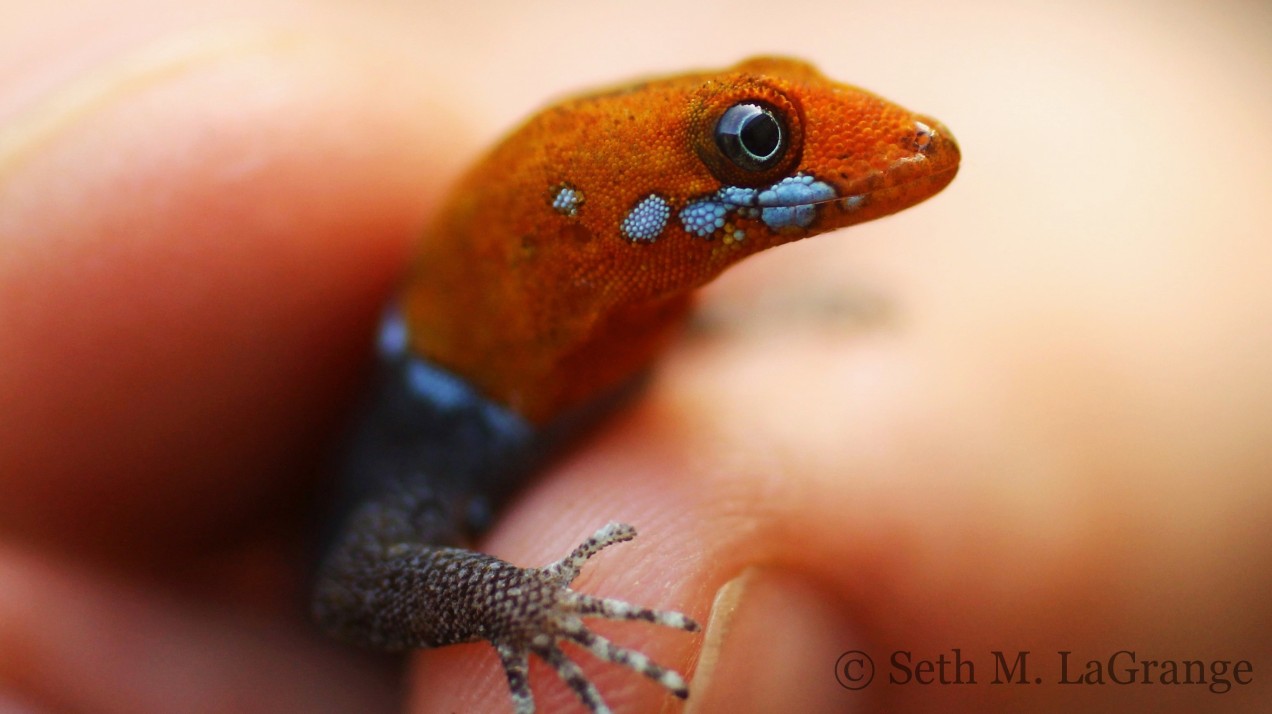
This is a False Fer-De-Lance (Xenodon rabdocephalus) from Costa Rica. It is showing off its defensive posture by flatten out it neck to make it look larger and opening its mouth. This is a rear fanged snake that is mildly venomous.
Reptile Photos

This is a False Fer-De-Lance (Xenodon rabdocephalus) from Costa Rica. It is showing off its defensive posture by flatten out it neck to make it look larger and opening its mouth. This is a rear fanged snake that is mildly venomous.

This is a photo of an eastern fence lizard (Sceloperus undulatus) from southern Illiois. You can see the bright blue scales on his underbelly indicating that this particular fence lizard is a male. The blue patches become much more apparent during the breeding season.

A young red milk snake (Lampropeltis triangulum syspila) from southern Indiana. This snake is very similar to the eastern milk snake (Lampropeltis triangulum triangulum) . These two snakes are often confused in areas where their ranges meet. The red milk snake has fewer dorsal blotches that extend much farther down the sides of the snake and these blotches are a much brighter red than the eastern milk snake. These snakes reach an average length of 51-76 centimeters and are found in a variety of habitats which often include small sheds and barns. They actively hunt for prey and primarily eat small mammals but will consume birds, eggs, and other reptiles. An interesting fact about milk snakes is that they have one of the largest distributions of any snake species with 25 recognized subspecies.

This is a common musk turtle (Sternotherus odoratus) from southern Indiana. These are small turtles ranging in size from 3-5.5 inches. They are strongly aquatic and are mainly carnivorous eating insects, snails, fish, tadpoles, and crayfish as well as some algae and vegetation. They are commonly called stinkpots because of the glands on the plastron that secrete a smelly musk.

This is a yellow headed gecko (Gonatodes albogularis) that I found in Costa Rica. The males of this species sport beautiful colors usually with orange or yellowish heads and blue bodies. females are usually all grey. This is a form of sexual dimorphism. In this case the male is brightly colored to attract a mate.
This is a rough green snake (Opheodrys aestivus) from southern Illinois. These snakes are very hard to spot considering they are a beautiful grass green and as slender as a vine. One of my favorites! Photo Credit: Seth LaGrange
Pictured is a timber rattlesnake (Crotalus horridus). Timber rattlesnakes are one of the most widespread rattlesnakes ranging throughout most of the eastern United States.Photo Credit: Seth LaGrange